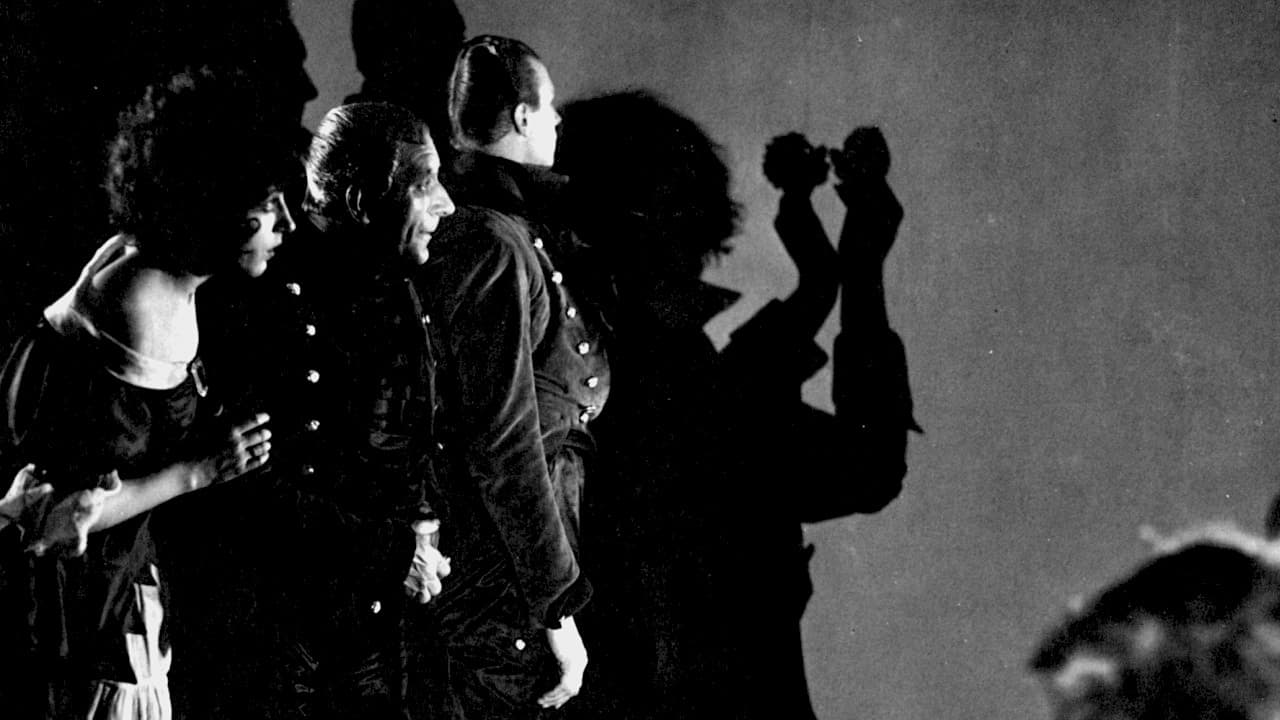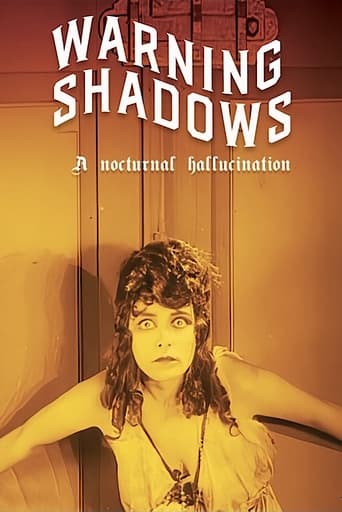

Ruth Weyher (the super-lovely wife), Fritz Kortner (the super-jealous husband), Fritz Rasp (the personal servant), Karl Platen (another servant), Lilli Herder (the maid), Alexander Granach (the strange illusionist), Eugen Rex (servant), Gustav von Wangenheim (the lover), Rudolf Klein-Rogge, Max Gulstorf, Ferdinand von Alten (older admirers).Director: ARTHUR ROBISON. Screenplay: Arthur Robison, Albin Grau, Rudolf Schneider. Photography: Fritz Arno Wagner. Art direction and costume design: Albin Grau. Producers: Willy Seibold and Enrico Dieckmann. PAN Film. German release: 16 October 1923. New York opening at the 55th Street Cinema: 9 August 1927. 85 minutes. (DVD available from Kino. Quality rating: 9 out of ten). COMMENT: A masterpiece of German expressionist cinema or a boring charade? Critics are not evenly divided. Most opt for the first scenario. Me? I stand in the middle. "Warning Shadows" is the sort of film that seems better in one's memory of tinted shadowy highlights than in an actual viewing where larger-than-life acting (particularly the over-the-top, bulging-eyed Kortner) is much less acceptable.
... View More"Warning Shadows" shouldn't work as well as it does. There are no titles, causing the plot to be confusing if not closely paid attention to; the Expressionistic elements are abundant but also strangely removed in style; the acting is often tongue-in-cheek, and the overall artiness is seemingly self-conscious. However, those same elements also contribute to this film's majesty and originality. There is simply no other film (that I'm aware of, anyway) that approaches the beauty and sheer erotic oddness of this obscure classic. I cannot adequately describe exactly what it is that makes "Warning Shadows" one of my all-time favorite motion pictures, so...just see it. It's available on DVD from our great friends at Kino.
... View MoreFor further reading I recommend an excellent article on the film in the film magazine 'Traffic' (nb. 33) by the German movie aficionado Enno Patalas. Patalas was also the driving force behind a complete restoration of the film at the Munich Filmmuseum - surprisingly there are some (hand- )colored sections in the original version. The shadow theater puppets shown in the movie were created by the German expressionist artist Ernst Moritz Engert, who was well connected to the early expressionist art- and literature-scene in Berlin and Munich. I adore the movie for exploring the deep aesthetic relations between the art of the shadow play and movie as an art itself - from my point of view the earliest and most reflected approach to provide a genuine philosophical statement on film.
... View MoreOne of the most influential of the German Expressionist films of the 1920's. The most radical aspect is the lighting, where the shadows are sometimes more important than the actors. Also unusual is that there are no titles except at the start to introduce the characters, who are just types and do not have names, just descriptive titles (husband, wife, youth, servant, etc.). The shadow puppet show is similar to what is seen more extensively in Abenteuer des Prinzen Achmed, Die (1925).
... View More